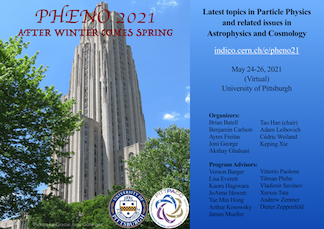Speaker
Description
I report on an ongoing investigation of how a hidden ‘dark’ confining gauge sector, common in Hidden Valley models such as the Mirror Twin Higgs, could lead to novel signatures in indirect detection searches for dark matter. Dark matter annihilation can then lead to dark showers of multiple and various hadrons, distinct from particle pair production. If there are no light fermions charged under this force, the lightest hadrons are glueballs, a spectrum of a dozen metastable states that is reasonably well understood from lattice calculations. The lightest of these states, the $0^{++}$ glueball, can mix with the Higgs and decay through this portal into the Standard Model (SM). The decay of $0^{++}$ glueballs has been studied within the context of collider searches, as it is the shortest lived state, decaying on scales that can be observed as displaced vertices. However, since indirect detection methods probe astrophysical length and time scales, they are also sensitive to the decays of longer living glueball states that can decay into $0^{++}$ and SM particles; this leads to an increased multiplicity of particles such as positrons and antiprotons, but also possibly probes the properties of the entire glueball spectrum. Since the decays depend on the allowed operators, this may allow information on the UV completion of the sector to be determined. Understanding the possible indirect signatures and constraints of a pure glue gauge theory is especially relevant as the next generation of cosmic ray telescopes, such as GAPS, begin their searches.
